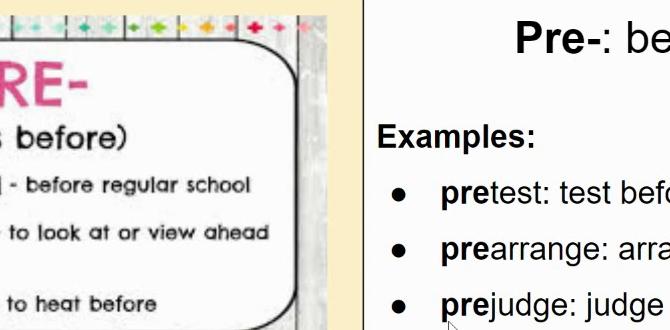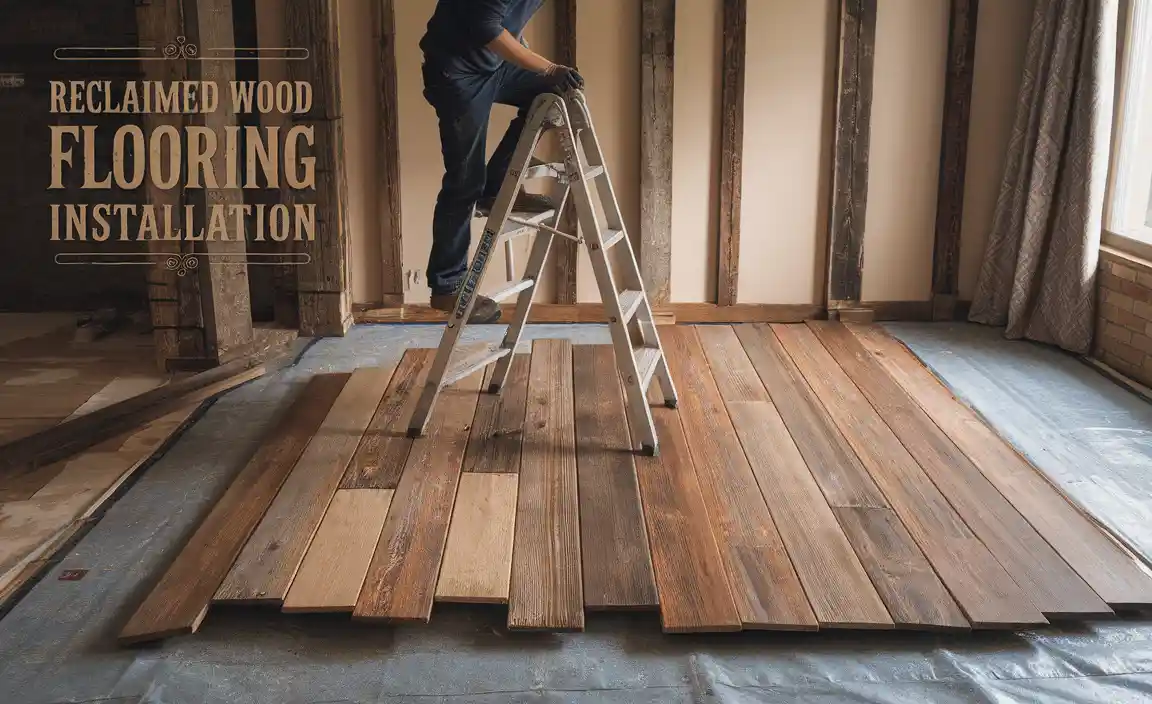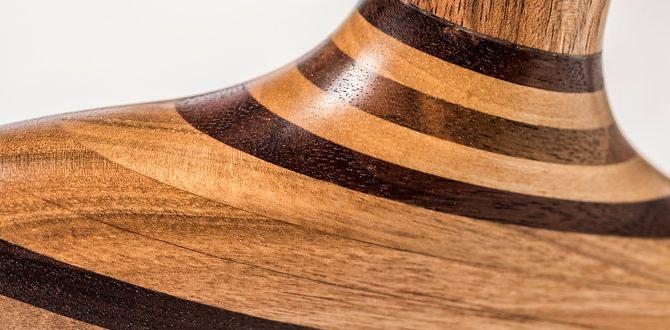What are the pros of brushless nailers? Brushless nailers offer superior power, efficiency, and longevity compared to brushed models, making them a top choice for serious DIYers and woodworkers. They provide consistent performance, longer battery life, and less maintenance, ultimately saving you time and effort on your projects.
Hey there, fellow builders and DIYers! Jack Shaffer here from Nailerguy. Are you frustrated with nail guns that sputter, die out halfway through a project, or just don’t have the “oomph” to drive a nail home? It’s a common snag that can really slow down your woodworking dreams, whether it’s building a fence, crafting a cabinet, or putting up trim. But don’t worry, I’ve got your back! We’re diving deep into a game-changer in the nailer world: brushless technology. By the end of this guide, you’ll understand exactly why a brushless nailer might be the best investment you make for your workshop. Get ready to nail your next project with confidence!
Table of Contents
The Brushless Revolution: Powering Your Projects
So, what exactly makes a brushless nailer so special? It all comes down to its motor. In a nutshell, brushless nailers use a motor with magnets that spin around the outside, rather than a motor with brushes that make contact inside. This might sound like a small difference, but it unlocks a whole world of benefits for your tools and your projects. For beginners, this means a more reliable experience from the get-go. No more fiddling with inconsistent power or worrying if your tool will keep up with you. It’s about making your DIY journey smoother and more enjoyable.
Understanding the Core Difference: Brushed vs. Brushless Motors
To truly appreciate the pros of brushless nailers, it helps to quickly understand the older technology they’re replacing. Most tools used to rely on “brushed” motors.
Here’s a simple breakdown:
Brushed Motors: These have physical brushes (usually made of carbon) that act as electrical contacts. As the motor spins, these brushes make constant contact with a spinning part called a commutator. This friction creates wear and tear over time. Think of it like a brake pad wearing down – eventually, it needs replacing.
Brushless Motors: These motors have magnets on the outside rotor. Instead of physical brushes, they use electronics to control the flow of electricity. This means no physical contact, no friction, and no wear from those brushes. It’s like upgrading from a clunky old engine to a sleek, efficient electric motor in a new car.
This fundamental difference is the secret sauce behind all the advantages you’ll find in brushless nailers.
The Top Pros of Brushless Nailers: Why They Shine
Now, let’s get to the good stuff! Why should you consider a brushless nailer for your next project? The benefits are significant, especially when you’re looking for performance, longevity, and ease of use.
1. Unmatched Power and Performance
One of the biggest advantages of brushless nailers is their raw power. Because the motor is more efficient and doesn’t lose energy through friction, it can deliver more consistent and higher torque.
Drives Nails Deeper: This means they can easily drive nails into hardwoods or through tougher materials without “bogging down.” You get a clean, flush finish every time.
Faster Firing Rates: Some brushless models can fire nails more rapidly, which is a huge plus for bigger jobs like framing or decking where speed matters.
Consistent Results: You won’t experience the power dips you might see with brushed tools as the battery drains or the motor heats up.
This consistent power means fewer misfires and less time spent going back to re-seat nails, saving you valuable project time.
2. Extended Battery Life and Efficiency
This is a massive win for anyone using cordless tools. Brushless motors are simply more efficient than brushed motors.
Less Energy Waste: They use less electricity to do the same amount of work, which directly translates to longer runtimes on a single battery charge.
More Holes per Charge: You can get significantly more nails driven before needing to swap batteries. This is invaluable on job sites or for extended DIY sessions.
Better Battery Management: The electronic controls in brushless systems often allow for smarter battery management, further optimizing power usage.
Imagine finishing a whole room’s worth of trim on a single charge! That’s the kind of efficiency we’re talking about.
3. Unparalleled Durability and Longevity
This is where brushless nailers really prove their worth over time. Without those physical brushes that wear down and need replacing, the motor itself lasts much longer.
Reduced Wear and Tear: The absence of brush friction means less heat buildup and less strain on the motor.
Fewer Maintenance Issues: You won’t have to worry about replacing worn-out brushes, a common maintenance task for brushed tools.
Longer Tool Lifespan: This leads to a tool that’s built to last, offering reliable performance for many years to come. While the initial cost might be higher, the extended lifespan often makes it a more economical choice in the long run.
For anyone serious about woodworking or tackling frequent DIY projects, the durability of a brushless nailer is a significant investment.
4. Quieter Operation
While not always the primary selling point, brushless nailers tend to operate a bit more quietly than their brushed counterparts. The electronic commutation and lack of brush friction contribute to a smoother, less noisy operation. This can make a noticeable difference, especially if you’re working in a residential area or for extended periods.
5. Lighter Weight and More Compact Designs (Often)
As technology advances, manufacturers can often design more compact and lighter-weight tools around efficient brushless motors. Because there are fewer mechanical parts (like brushes), the overall tool can be streamlined. This means less fatigue when you’re working overhead or for long hours, making your projects more comfortable to complete.
Brushless Nailers vs. Other Power Sources: A Quick Look
It’s not just about brushed vs. brushless; it’s also about how the nailer is powered. Brushless technology can be found in cordless (battery-powered), pneumatic (air-powered), and even some more specialized corded models.
Cordless Brushless: These are the stars of the show for many DIYers. They offer incredible freedom of movement. You get the power and efficiency of brushless in a portable package. A great example is if you’re working on a deck and don’t want to drag an air hose around.
Pneumatic Brushless: While less common, some high-end pneumatic nailers might incorporate brushless components for improved efficiency or control. However, the core advantage of pneumatic is consistent power delivery from an external compressor.
For most DIYers looking for the “pros,” we’re usually talking about cordless brushless nailers. They combine the best of both worlds: the freedom of cordless with the advanced performance of brushless motors.
When to Choose a Brushless Nailer: Project Suitability
So, when does a brushless nailer really make a difference? Here’s a quick guide to help you decide:
Frequent DIYers: If you’re consistently tackling projects around the house, from furniture building to home renovations, the durability and performance will be a huge benefit.
Woodworkers: Whether you’re a hobbyist or a professional, consistent power and the ability to drive nails into various wood types are essential.
Large Projects: For jobs that involve driving hundreds or thousands of nails (like framing, decking, or fencing), the efficiency and extended battery life of brushless are invaluable.
Portability is Key: If you don’t have easy access to an air compressor or want the freedom to work anywhere, a cordless brushless nailer is your best bet.
Investing in Longevity: If you want a tool that will serve you well for many years and require minimal maintenance, brushless is the way to go.
Brushless Nailers vs. Other Alternatives: A Comparison Table
To help visualize the advantages, let’s compare how brushless nailers stack up against other common options.
| Feature | Cordless Brushed Nailer | Cordless Brushless Nailer | Pneumatic Nailer (with Compressor) |
| :————– | :———————– | :———————— | :——————————— |
| Power | Good, can struggle with hardwoods/density | Excellent, consistent power, handles tough materials | Excellent, very consistent, best for heavy-duty |
| Battery Life| Shorter runtimes | Significantly longer runtimes | N/A (requires compressor) |
| Durability | Fair, brushes wear out | Excellent, less wear and tear | Excellent (tool itself), compressor has moving parts |
| Maintenance | Moderate (brush replacement) | Minimal (no brushes) | Moderate (compressor maintenance, hose checks) |
| Portability | High, no cords | High, no cords | Low to Moderate (requires compressor, hoses) |
| Noise | Moderate to High | Moderate | Moderate to High (compressor can be loud) |
| Cost (Initial) | Lower | Higher | Moderate to High (tool + compressor cost) |
| Best For | Occasional use, lighter tasks | Frequent use, varied materials, longer projects | Constant heavy-duty use, workshops with existing setup |
As you can see, while pneumatic nailers offer raw power and reliability, cordless brushless nailers provide an excellent balance of power, portability, and long-term value for most DIYers.
Getting Started with Your Brushless Nailer: Tips for Success
Ready to embrace the power of brushless? Here are a few tips to make your experience even better:
1. Choose the Right Nailer for the Job: Brushless technology is great, but make sure you’re getting the right type of nailer (framing, finish, brad, etc.) for your specific project needs.
2. Invest in Quality Batteries: For cordless models, good quality batteries are crucial. Larger amp-hour (Ah) batteries will give you more runtime between charges.
3. Read the Manual: Always take a moment to read your tool’s manual. It contains vital safety information and operating instructions tailored to your specific model. You can find great resources on tool safety from organizations like the Occupational Safety and Health Administration (OSHA), which has detailed information on safe nail gun operation.
4. Practice on Scrap Wood: Before diving into your main project, get a feel for the nailer by practicing on some scrap pieces. This helps you calibrate depth settings and get used to the trigger action.
5. Keep it Clean: Even brushless tools benefit from a little care. Wipe down your nailer after use to remove dust and debris.
6. Safety First! Always wear safety glasses. Know where your nails are firing and ensure your work area is clear. Never point the nailer at anyone, even when it’s not loaded.
Frequently Asked Questions About Brushless Nailers
Let’s tackle some common questions beginner woodworkers have about these fantastic tools.
Q1: Are brushless nailers worth the extra cost?
A: For most serious DIYers and woodworkers who plan to use their nailer frequently, yes, they are often worth the higher initial cost. The extended lifespan, superior performance, and better battery efficiency can save you money and frustration in the long run.
Q2: Will a brushless nailer work with my existing batteries from other tools?
A: This depends on the brand. Many tool manufacturers have battery platforms where batteries are interchangeable across their cordless tools (both brushed and brushless) within the same voltage class. Always check compatibility for your specific tool brand.
Q3: Do brushless nailers require special maintenance?
A: No, the main benefit is that they require less maintenance. You don’t need to worry about replacing worn-out carbon brushes. Basic cleaning and occasional lubrication (as per the manual) are usually all that’s needed.
Q4: Can I use a brushless nailer for framing and finer trim work?
A: Yes, provided you choose the correct type of brushless nailer. There are brushless framing nailers specifically designed for structural work with larger nails, and brushless finish or brad nailers for more delicate trim and molding. The brushless motor technology enhances the performance of any type of nailer.
Q5: How do I know if my nailer is brushless?
A: The packaging, product description, and tool itself will usually clearly state “brushless motor.” If you’re unsure, check the manufacturer’s website or the tool’s specifications. It’s often a highlighted feature.
Q6: How much more powerful are brushless nailers typically?
A: While exact figures vary by model and manufacturer, brushless motors are generally 25-50% more efficient than brushed motors. This translates not just to more power, but also to more consistent performance and longer runtimes.
Conclusion: Elevating Your Woodworking Game
So there you have it! We’ve explored the fantastic pros of brushless nailers, from their robust power and efficiency to their impressive durability and reduced maintenance. For anyone looking to upgrade their toolkit or make their DIY projects more enjoyable and effective, a brushless nailer is a smart move. They represent the cutting edge of tool technology, offering a smoother, more reliable, and ultimately more rewarding experience. Whether you’re building that dream deck, crafting intricate furniture, or simply hanging some shelves, investing in a brushless nailer means investing in quality, longevity, and a tool that will keep up with your ambition. Happy building!



